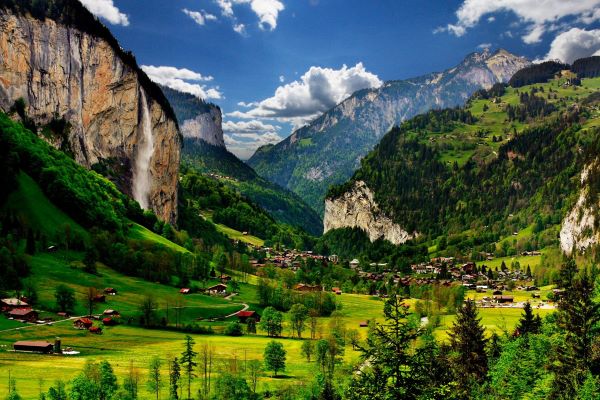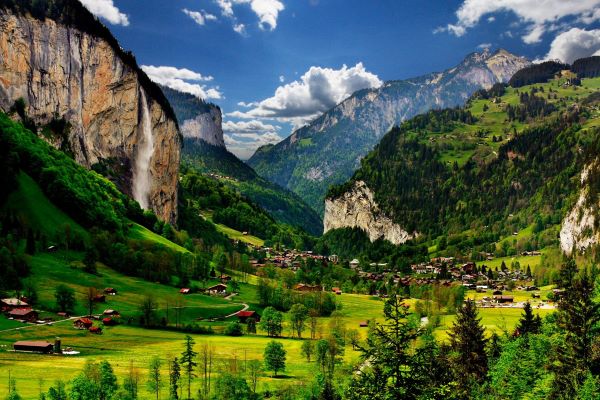Sunday, November 24, 2024

Glaciers, once awe-inspiring symbols of Earth’s natural beauty, continue to capture the imagination of travelers worldwide. Though these massive ice formations are shrinking at an alarming rate due to climate change, their beauty, power, and sheer scale still attract tourists from all over the globe. The glaciers in various parts of the world are not only important environmental landmarks but also key tourist destinations that influence global travel trends, offering visitors an opportunity to experience the raw power of nature firsthand.
Glaciers as Key Attractions in the Travel Industry
In recent years, there has been an increasing interest in visiting glaciers, particularly as they become rarer and more endangered due to rising global temperatures. Travelers are flocking to these frozen giants to experience their beauty before they disappear. The travel industry has been responding by offering unique glacier-based experiences, ranging from trekking tours to boat rides near glacial fronts. The popularity of glaciers as tourist destinations has led to an uptick in eco-tourism, with an emphasis on sustainability and responsible travel to protect these fragile environments.
The following are some of the most famous and impressive glaciers across the globe that continue to mesmerize visitors and shape the tourism industry:
Perito Moreno Glacier, Argentina
Located in the Los Glaciers National Park in Argentina’s Patagonia region, Perito Moreno Glacier is a prime example of a living glacier that moves continuously. It is one of the most iconic glaciers in the world, attracting thousands of tourists annually. The glacier’s unique feature is its regular calving, where massive chunks of ice break off and crash into the waters below, creating a dramatic spectacle. The Perito Moreno Glacier remains one of the few glaciers worldwide that is still advancing, making it a must-see for travelers looking for a rare and dynamic natural phenomenon.
Aletsch Glacier, Switzerland
Stretching across 23 kilometers, the Aletsch Glacier is the largest glacier in the Alps and is recognized as a UNESCO World Heritage site. It is a stunning sight that attracts visitors who come to witness its massive ice formations and learn about the surrounding landscapes that have been shaped by this glacial force. Situated in the Swiss Alps, Aletsch Glacier offers a range of hiking tours and scenic views that contribute to its popularity. Its significance to both environmental studies and tourism continues to grow as the glacier shrinks over time, sparking conversations about the long-term impact of climate change on these majestic formations.
Columbia Glacier, Alaska, USA
As the fastest-moving glacier in the world, Columbia Glacier in Alaska has been retreating rapidly since the 1980s due to rising temperatures. Despite this, it remains one of the most dynamic and fascinating glaciers for travelers to explore. The glacier is located in Prince William Sound, and visitors can take boat tours to see the glacier’s towering ice cliffs. Its retreat provides an insight into the effects of global warming on glaciers and is a stark reminder of the urgency of addressing climate change. Columbia Glacier has become a focal point for eco-tourism, with travelers eager to witness the glacier’s transformations and contribute to the conversation about climate change.
Jostedalsbreen Glacier, Norway
As the largest glacier in continental Europe, Jostedalsbreen in Norway spans approximately 487 square kilometers. The glacier is surrounded by majestic fjords and picturesque landscapes, making it one of the most popular destinations for travelers in Scandinavia. Tourists can explore the glacier through hiking tours, ice climbing, and even take part in guided glacier walks. Jostedalsbreen’s scenic beauty and accessibility make it a favorite among nature lovers and adventure seekers alike, and it plays a significant role in the local tourism industry by attracting visitors year-round.
Franz Josef and Fox Glaciers, New Zealand
These twin glaciers are unique due to their location in the temperate rainforests of New Zealand’s South Island. Franz Josef and Fox Glaciers are relatively short glaciers that descend from the Southern Alps into lush rainforests. The accessibility of these glaciers makes them a popular tourist destination, with options for guided walks and scenic helicopter tours. Visitors can witness the stunning contrast between the ice and the surrounding greenery, creating an unforgettable experience. As one of the most popular attractions in New Zealand, these glaciers have become a major economic driver for the region’s tourism industry.
Vatnajökull Glacier, Iceland
Vatnajökull is not only the largest glacier in Iceland but also the largest in Europe by volume. This glacier is known for its otherworldly landscape, which includes ice caves, icebergs, and glacial rivers. Vatnajökull attracts visitors who seek to explore its ice caves or take part in glacier hiking tours. The glacier’s impressive size and dynamic landscape make it a critical site for both tourism and environmental education. The rapid melting of Vatnajökull is a major concern, making it an essential location for travelers interested in understanding the impacts of climate change on our planet’s glaciers.
Khumbu Glacier, Nepal
Located in the Himalayas, the Khumbu Glacier is one of the highest glaciers in the world and serves as the route to Mount Everest. Adventurers, trekkers, and mountaineers travel here to get closer to the world’s tallest peak. While trekking to Everest Base Camp, visitors pass through the Khumbu Glacier, where they experience its harsh beauty firsthand. As more trekkers visit the region, the glacier has become an integral part of Nepal’s tourism infrastructure, helping to boost the local economy through trekking and mountaineering tours.
Pío XI Glacier, Chile
Also known as Bruggen Glacier, Pío XI Glacier is the largest glacier in South America, stretching over 66 kilometers. Located in Chilean Patagonia, it is one of the most remote glaciers in the world, making it an exciting destination for adventurous travelers looking to explore off-the-beaten-path locations. The glacier is a significant site for eco-tourism and scientific research, and its isolation ensures that it remains relatively untouched by mass tourism. Due to its pristine condition, Pío XI Glacier continues to attract explorers and those looking for unique, challenging destinations.
The Global Impact on Travelers and the Travel Industry
Glaciers are an invaluable part of our natural world, offering a breathtaking look into Earth’s past and future. As climate change accelerates, the need for responsible travel to these frozen landscapes becomes ever more urgent. The global travel industry is responding to this need by providing sustainable tourism options that allow travelers to witness these awe-inspiring glaciers while also raising awareness of the environmental issues they face. As more travelers seek out glaciers for their beauty and uniqueness, these destinations will continue to shape the eco-tourism market and inspire discussions about conservation and climate action.

